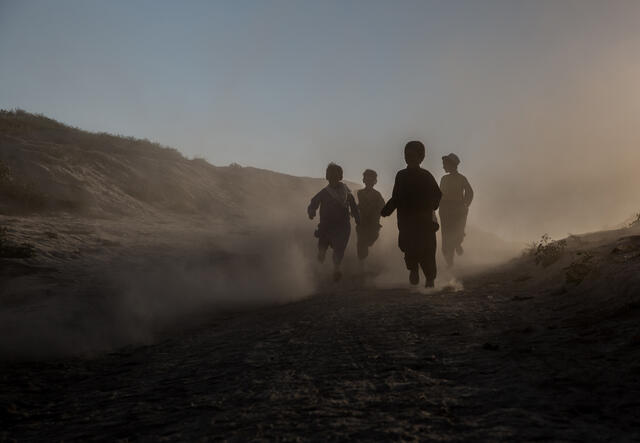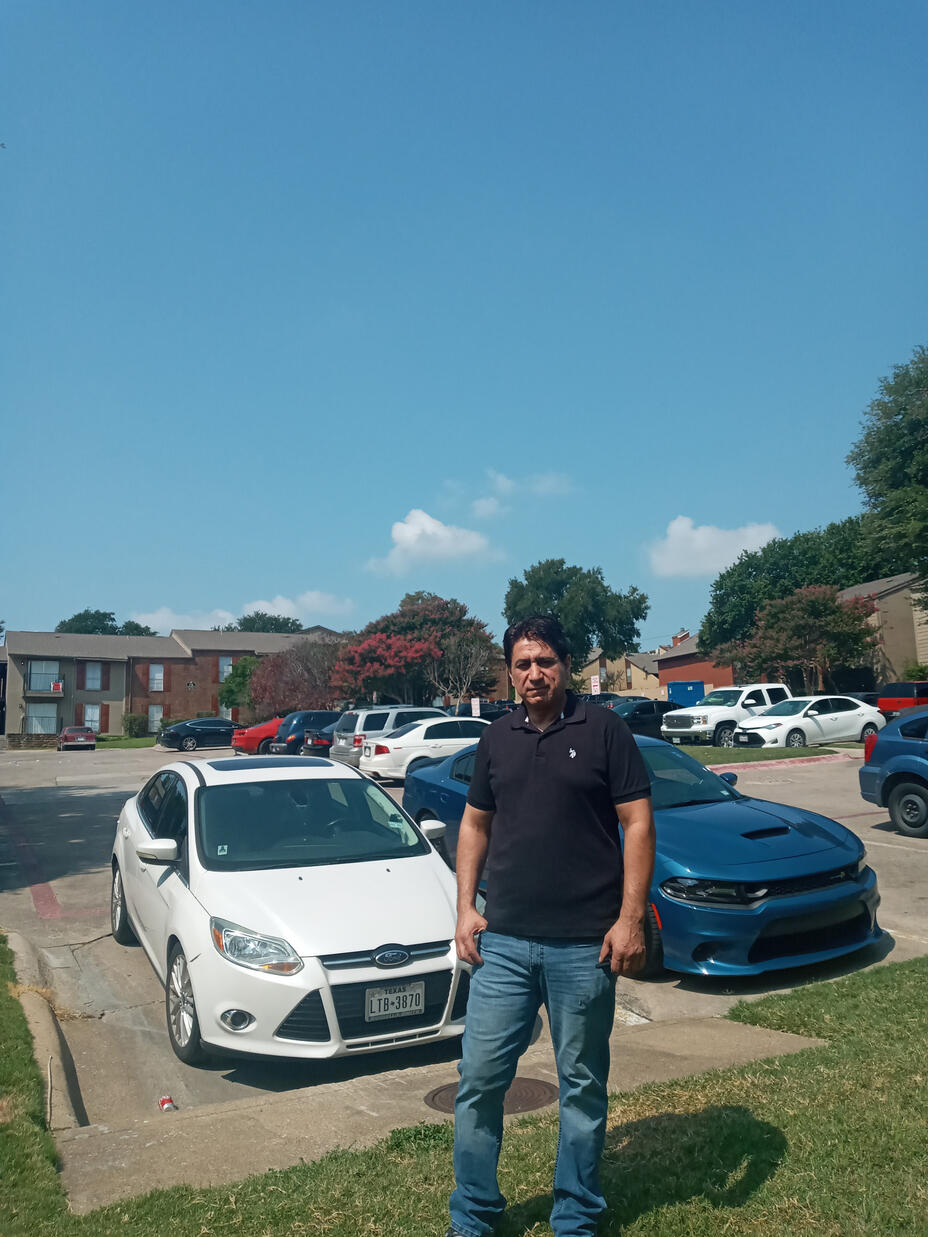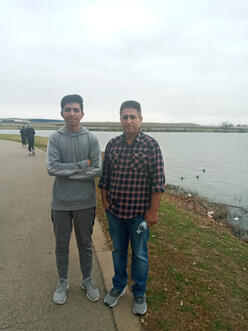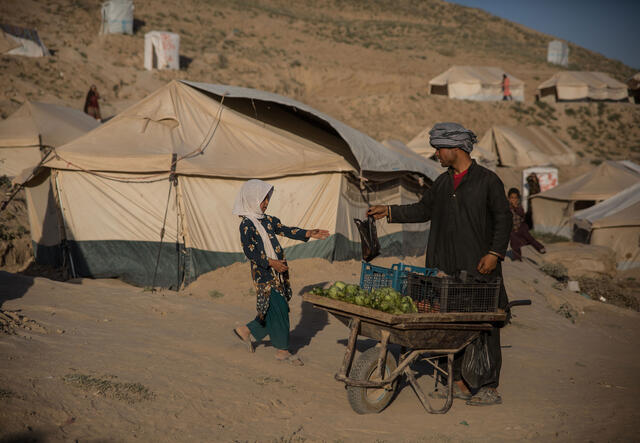“My life was in danger”: How Afghan allies seek safety in the U.S.
Two men resettled under the Special Immigrant Visa (SIV) program to support Afghan allies discuss their fears for those left behind.
Two men resettled under the Special Immigrant Visa (SIV) program to support Afghan allies discuss their fears for those left behind.
On July 22, 2018, a suicide bomber attacked Kabul airport in Afghanistan, leaving 14 dead and 60 wounded. Ahmad*, 30, was working in the United States embassy just 500 feet away when it happened.
“When my wife saw that I was near the bomb blast, she told me, ‘Please go and apply for the SIV [Special immigrant Visa] because your life is in danger. If you die, who will support your children?’” Ahmad said. “She wanted to come [to the U.S.] and start a new life.

The Afghan SIV program was created in 2006 to protect Afghan allies who risked their lives working for U.S.-funded programs or helping U.S. troops in the war. While tens of thousands of Afghan civilians are eligible for this visa, only 16,000 SIVs have been issued since 2014 and more than 18,000 applications currently sit in the pipeline.
With violence intensifying and U.S. troops leaving the country, the Biden Administration recently took steps to speed up processing for allies in Afghanistan. Upwards of 3,000 people are being relocated to a U.S. government facility in Virginia and more can now apply under a new program—called a P-2 designation—for those who don’t qualify for an SIV.
“There is a big problem in our country,” Ahmad said. “Every day, when you come out from your home, you don’t know if you will go back home safely or not.”
Ahmad is one of the lucky ones who was able to receive an SIV and seek safety for his family in the U.S, but many Afghans remain in dire need of emergency protection. While a step in the right direction, the SIV and P2 programs benefit less than 1% of Afghans: Millions of people in danger cannot access them, and the P-2 program requires applicants to first travel to a third country—a journey that is not possible for many. In the meantime, civilian casualties have reached record levels in Afghanistan and extreme drought has forced hundreds of thousands of people to leave their homes.
“Like me, there are thousands of others in Afghanistan who have cooperated with the U.S.,” Ahmad said. “And their lives and the lives of their families are severely at risk.”

Applying for an SIV is a slow and painstaking process, often taking years to complete. Applicants are asked to undergo a background check, pass a medical examination, complete an interview, and submit a range of forms, including birth certificates, passports, and letters of recommendation.
For Ehsanullah, a father of two, it was an almost four-year slog. He applied for the SIV in September 2015, having been a site manager for an international company that contracted with the U.S.
“The reason I applied for the SIV was because my life was in danger,” Ehsanullah said. “I got threatening letters and shots were fired at me while I was doing my job. In so many ways I was not feeling safe and my family was not feeling safe, so that's why I tried to use this opportunity.”

Ahmad, who worked in the Regional Security Office of the U.S. Embassy in Kabul, applied for his SIV in 2018. Not only had he witnessed the bomb blast at the airport, but one of his colleagues had died in another attack a few years earlier.
“It took one year and eight months,” he said of his approval process. “One of my friends passed the interview and is still waiting for his medical exam. It’s been almost two years.”
Ehsanullah and his family arrived in the U.S. in February 2019. The International Rescue Committee helped them with housing and English language courses. With a commitment to supporting those in need, the IRC has resettled more than 16,000 Afghan SIV recipients since the program began. We also recently began providing services for the SIV recipients relocated to Virginia, including cash assistance, employment assistance, and cultural orientation as they rebuild their lives in communities across the U.S.

“Without help and assistance from the IRC, I wouldn't have been able to come to the U.S.,” Ehsanullah said. “They provided so many opportunities and also helped us financially for the initial four months.”
Ehsanullah started working right away and, in less than two years, he was promoted to team leader at a Walmart store, where he now supervises 25 people. Meanwhile his elder son is researching colleges for dentistry and his younger son is about to start preschool. The family is also expecting a new baby next year.
“Altogether, it has been a wonderful experience,” Ehsanullah said.
Ahmad and his family have also been feeling “hopeful, happy and above all safe” since arriving in the U.S. in December 2019. His children are enrolled in school and his wife, who graduated from law school in Afghanistan, hopes to continue studying in the U.S.
As for Ahmad, he is working for Apple in one of its warehouses and has big plans for his career, having graduated from a civil engineering program in Afghanistan.
“My long-term goal is to become a business owner and lead a car dealership,” he said. “Right now, I want to support my family.”

Ahmad and Ehsanullah still fear for those left behind in Afghanistan, including their family and friends.
“I’m very concerned because armed groups are attacking their city,” Ahmad said of family members who remain in the country. “Last night they told me there was a bomb blast near my home and a lot of people died.”
“Their lives are really in danger,” Ensanullah says of the people he knows who have applied for SIVs. “And not just them but many like them. I asked them to reapply—and maybe this time it will work. I’m praying for them that this time they will not get rejected.”
The recent Biden Administration policy changes offer some hope to a limited number of Afghan SIV applicants by expediting their cases. Between 1,250 and 3,000 people are being relocated to the U.S. to complete the approval process within 30 days of arrival.

Still, continued investment and focus are needed to properly address this emergency, reduce the backlog of people in danger who are waiting on visas, and quickly stand up the P-2 as a viable pathway to safety. The crisis also speaks to the critical need to rebuild the robust U.S. refugee resettlement program dismantled by the previous administration—and set an ambitious admissions goal for next year.
“[Armed groups] could capture, arrest, and kill those who worked with the U.S. government,” Ehsanullah said. “If I hadn’t gotten the SIV, probably I would’ve been killed, and this is the case for others who are in Afghanistan.”
“It is crucial to help those who helped the U.S. forces there and I think this is a moral responsibility of the U.S. government,” he added. “This has saved the lives of thousands so far and it’s going to save the lives of thousands more if the program continues.”
*Last names omitted to protect families’ safety
Afghanistan crisis: Learn more
Crisis information: Afghanistan facts l What is happening in Afghanistan? l Crisis outlook
In focus: Women in Afghanistan l Hunger crisis l Climate change impacts l How Afghan allies seek safety l Afghan Special Immigrant Visa (SIV)How the IRC helps Afghans:In Afghanistan l In the U.S. l Around the globe
How to help Afghans: In Afghanistan l In your community l Donate to the IRC